Matador Network's Blog, page 694
March 1, 2021
Things to do in Sullivan County
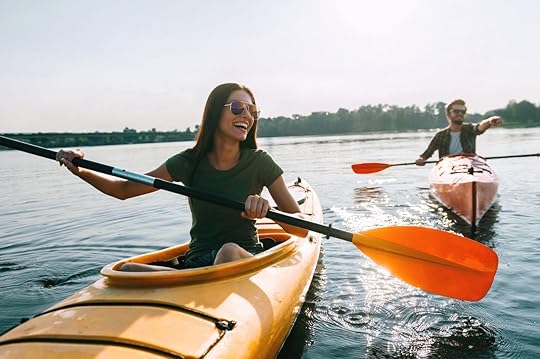
The Hamptons or the Catskills? The choice New Yorkers make between the city’s top two weekend escapes is as telling as their choice between Manhattan and Brooklyn. It’s more than a destination; it’s an identity. You’re either the Hamptons — a Long Island refuge favored by wealthy Upper East Siders — or the Catskills — an affordable swath of upstate New York colonized by artsy-fartsy Brooklynites. There is no in-between.
But in recent years, these disparate destinations started looking eerily similar. Upstate hamlets like Kerhonksen are now synonymous with million-dollar homes like East Hampton. Nearby towns along the Hudson River are now chockablock with the same Soho-style boutiques found in Sag Harbor. Counties like Putnam, Dutchess, Ulster, Greene, and Columbia even earned a new nickname — the Camptons — and a recent surge in wealthy New Yorkers snatching up local real estate ensures the inevitability of their Hamptonsification.
This reality poses a quandary for New Yorkers who once identified with the Catskills. If the uber-rich rule both vacation destinations, where does everyone else go for a long weekend outside of the city?
The answer can be found in Sullivan County, where the Catskill Mountains end and the Delaware River begins. Here, a new set of towns have emerged as the go-to destinations for city-dwellers opposed to Long Island luxury and Hudson River haughtiness. These tiny enclaves are everything the Hamptons and the Camptons are not — under-developed, inexpensive, and unpretentious. They’re the un-Hamptons, and they’re in the midst of a golden age.
A brief history of the regionThe Catskill Mountains’ sleepy western corner saw its fair share of golden ages in the past 150 years: as a city escape in the late 19th century, a popular Jewish getaway in the mid-20th century (immortalized in Dirty Dancing and The Marvelous Mrs. Maisel), and most famously, as the 1969 hippy haunt that hosted Woodstock. But during the latter half of the 20th century, weekenders forgot Sullivan County and left its towns for dead.
It wasn’t long before hicksters like Zach Klein (creator of Cabin Porn) rediscovered utopia in Sullivan County’s untouched landscape and inspired other young Brooklyn entrepreneurs to follow. Now, a new generation is busy revitalizing tiny downtowns in Livingston Manor, Callicoon, Narrowsburg, and Bethel with hip options for eating, drinking, and shopping.
Here’s everything you need to know before you visit.
Getting there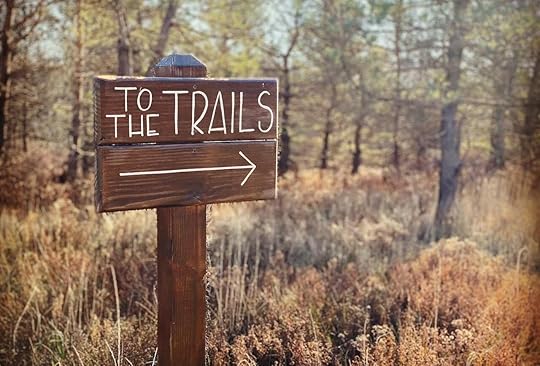
Photo: The Arnold House/Facebook
Access is one of the main reasons Sullivan County remained untouched for so long. Unlike the Camptons, there’s no Manhattan-bound train line or bus route leading to the area’s most sought-after locales. Travelers must rent their own set of wheels to properly enjoy the region.
The top towns to visitLivingston Manor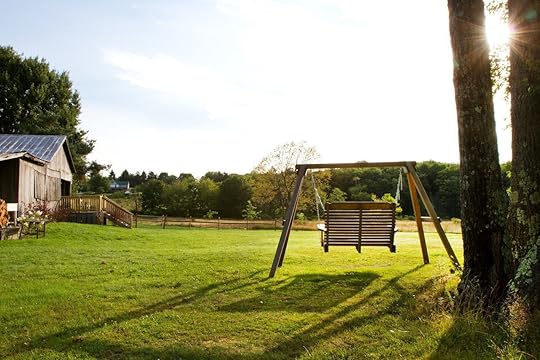
Photo: The Arnold House
Livingston Manor is the epicenter of the current renaissance and the best place to find local lodging. A five-minute drive from Main Street leads to Arnold House, an inviting resort on Shandelee Mountain with an on-site spa and access to nearby hiking trails. The rustic-chic cottages behind the Catskill Brewery, formerly inhabited by the company’s brewmaster, make a smart base for folx who’d prefer to be within walking distance of town.
The shopping on Livingston Manor’s Main Street is an interior designer’s dream. Taylor + Ace, which opened in 2020, sells a well-curated collection of vintage furniture and housewares at reasonable prices. Homestedt is a cozy shop with stylish outdoor gear and goods fit for rural living. Nest, owned and operated by former Vogue design director Anna Bern, is a boutique featuring Scandi furniture, Moroccan rugs, modern art, and ceramics. Bern’s store is the closest you’ll get to the Hamptons, but her classy assortment of home goods is still worth a gander.

Photo: Main Street Farm/Facebook
When it comes to food and drink, Livingston Manor serves Sullivan County’s top treats. For wood-fired pizza and creatively mixed cocktails, try the Kaatskeller, located in the center of town. Main Street Farm is a trendy market and cafe that sells local produce, artisanal foods, and offers a short menu of to-go sandwiches and salads. Upward Brewing Company — a 2019 addition — is a must-visit for anyone in the region. The beers are smooth and unfussy, the elevated pub grub suits both carnivores and vegetarians, and the property is like a millennial-approved playground. Located on over 120 acres of land, Upward boasts a chalet-style restaurant, an expansive field filled with picnic tables, and a 30-minute hiking trail that leads to panoramic views.
NarrowsburgNarrowsburg, located 45 minutes south of Livingston Manor, draws an eclectic mix of antique aficionados and urban sophisticates with its small-but-mighty offerings. Visitors will find the town’s finest shops and eateries snuggled together along Main Street, a solitary block perched on a bluff overlooking the Delaware River.
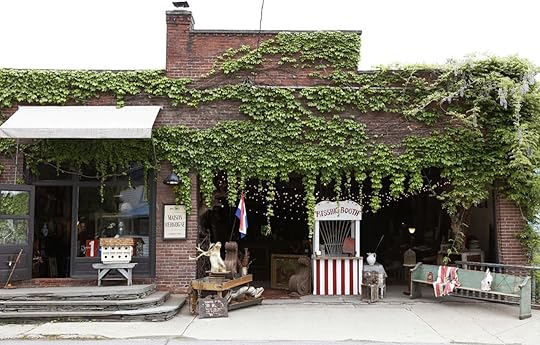
Photo: Maison Bergogne
Tusten Cup, located on the edge of town, is a hip java joint serving breakfast and lunch. Sunny’s Pop hocks high-end hipster bait for the home. One Grand Books is a literary oasis that sells titles selected by famous actors, thinkers, and writers. Antique stores, like Maison Bergogne, range from cute and kitschy to down-right bizarre.
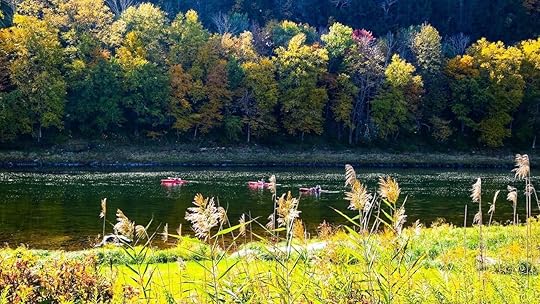
Photo: Lander’s River Trips/Facebook
If you’re an outdoor enthusiast, Narrowsburg is the ideal location to set up camp. In summer, daring divers jump into the Delaware River from cliffs underneath the Narrowsburg-Darbytown Bridge while families head upstream to wade in the water at nearby Skinner’s Falls. Lander’s Rivers Trips rents rafts, tubes, and everything else needed for an aquatic adventure on the Delaware. For epic views of the river, hike the Tusten Mountain Trail — a 1.5-mile loop just south of town. The Blue Fox Motel, a retro lodge located close by, is a comfy place to rest your head once night falls.
CallicoonTwenty minutes north of Narrowsburg lies Callicoon, a sleepy enclave that’s jolted awake for the Sunday afternoon farmers’ market. Purveyors sell a cornucopia of local produce, baked goods, and specialty items you won’t find in grocery stores.
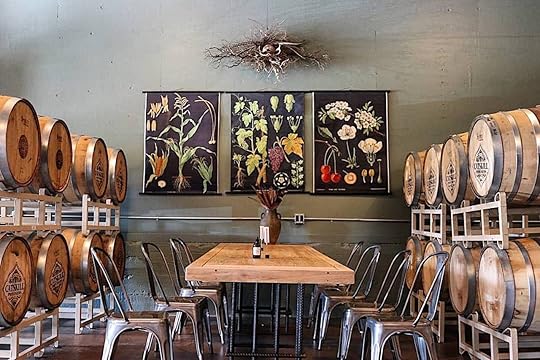
Photo: Catskill Provisions/Facebook
Visitors who come for the market should stay for the restaurants. Catskill Provisions, an artisanal food-and-spirits company, opened a tasting room in 2020 where foodies can sample locally made whiskey, vodka, or gin alongside meals made with ingredients from nearby farms. The Kitchen Table is the go-to for coffee and baked goods like homemade oatmeal cream pies. Bà & Me serves a surprisingly good grab-and-go selection of Vietnamese food unavailable elsewhere in the county.
Once you’re well-fed and adequately lubricated, Callicoon’s quirky stores make for a fun few hours of shopping. Litt sells vintage furnishings and creative gifts, Spruce is a one-stop-shop for everything like fancy cheeses and lux linens, and the Antique Center has three floors of gently used hidden gems. Outdoor adventurers can skip the stores and head straight to the Delaware River for fishing, swimming, and kayaking.
Bethel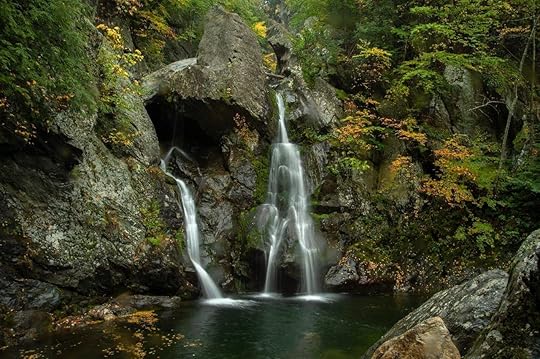
Photo: Bethel Woods Center for the Arts/Facebook
Bethel might be a ghost town in winter, but between May and September, the rolling hills and swimmable lakes overflow with transplants seeking summer refuge. White Lake and Kauneonga Lake, two boat-friendly spots connected by a channel, get the most attention. Here, you’ll find Java Love (the tastiest coffee for miles around), Candy Cone (an old-school ice-cream counter), and Benji & Jake’s (a local staple serving wood-fired pizza, craft beer, and strong cocktails with lake-front views). If you’re looking to swim, head to the beach at Lake Superior State Park — a family-friendly spot that’s open to the public.
Boomers and those who love them will remember Bethel as the site of Woodstock in 1969 — a three-day festival that shaped the musical tastes and social consciousness of a generation. The site, listed on the National Register of Historic Places, is now part of the Bethel Woods Center for the Arts, an outdoor venue that draws sizable crowds to its summer concerts.
Although Woodstock is a distant memory, hippiedom remains a cornerstone of the local culture. It’s no wonder the long-haired hipsters who recently rediscovered Sullivan County resemble the long-haired hippies who came before them. History, it seems, really does repeat itself. 
The post Sullivan County, New York, is the un-Hamptons getaway you need to visit now appeared first on Matador Network.

New England lighthouses to sleep in
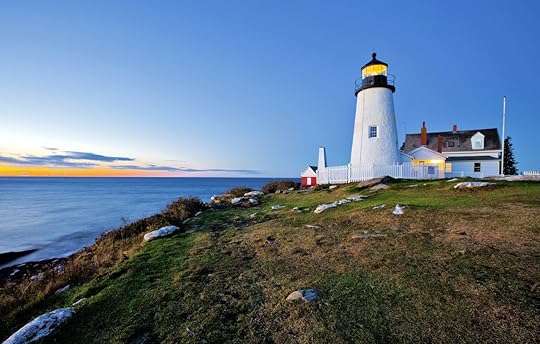
We hope you love the spaces and stays we recommend! Just so you know, Matador may collect a small commission from some of the links on this page if you decide to book a stay, and listed prices are accurate as of the time of publication.
There are many must-dos when traveling through New England. If you’re exploring the region during the fall, you must take a road trip to admire the world-famous foliage; if you’re traveling during the holidays, you can’t leave before checking out the Hallmark-movie-like towns that dot the area; and if you’re wanting to spend time in nature, you can’t miss the stunning and unbelievably underrated state parks. But before anything else, there is one activity that would be sacrilegious to forego: touring the lighthouses.
You can plan an entire road trip around the beacons or see them from a boat on one of the many lighthouse tours available, but the best way to really appreciate New England’s lighthouses is to stay in one. There are only a few lighthouses in New England that are equipped and allow for overnight stays, and we’ve selected the best of them in Maine, Massachusetts, and Rhode Island. Here are 11 New England lighthouses where you can spend the night.
MaineIsle au Haut Lighthouse, Isle au Haut, ME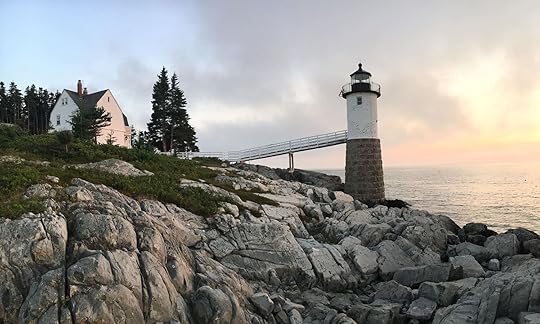
Photo: The Keeper’s House/Facebook
If you seek peace and solitude, the Isle au Haut Lighthouse is a great option. Located on the remote island of Isle au Haut, the lighthouse is only accessible by ferry from the small town of Stonington. Guests don’t actually stay in the lighthouse, which still acts as an active US Coastguard aid to navigation, but in the Keeper’s Cottage right across from the lighthouse or in the Oil House Cottage 100 yards away. All the rooms are furnished with antiques and lit by gaslights, candles, and kerosene lanterns, so the atmosphere is rustic and cozy. The best room in the Keeper’s Cottage is the Keeper’s Room with its close-up view of the lighthouse. The Garret Room, which covers the entire third floor of Keeper’s Cottage and has beautiful views of Penobscot Bay, is a close second. Built in 1907, the Isle au Haut Lighthouse station was fully restored as an inn in 1986, and the lighthouse itself was brought back to its glory days in 1999.
Burnt Coat Harbor Light Station, Swan’s Island, ME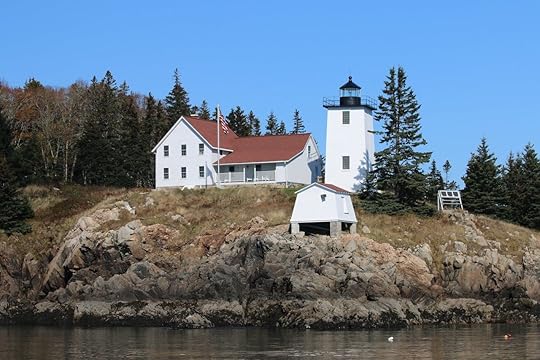
Photo: Friends of the Swans Island Lighthouse/Facebook
Located on Swan’s Island, the Burnt Coat Harbor Light Station is only accessible by ferry from Bass Harbor near Acadia National Park. The Keeper’s House apartment at the Burnt Coat Harbor Light Station is available for rent for one week minimum from June to mid-October for $1,200 per week in July and August and $1,000 per week in June, September, and October. The apartment is upstairs and designed for two people; it features one large bedroom, a separate living room, and a fully equipped kitchen. Every room in the apartment has beautiful views of either the ocean, the surrounding islands, the harbor, or the village. The Keeper’s House’s downstairs area is a museum dedicated to the lighthouse station and is open six days a week during the summer season, so don’t expect an entirely quiet and solitary stay. Tours of the 1872 lighthouse, which is still active and just a few yards away from the keeper’s house, also take place regularly in the summer.
Little River Light Station, Rockland, ME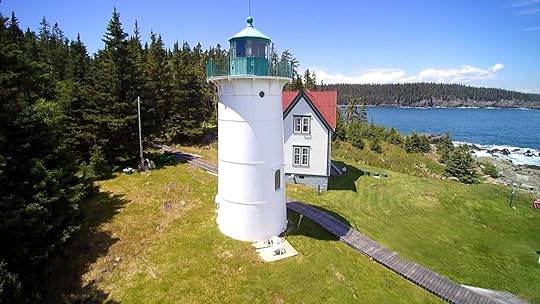
Photo: Little River Lighthouse/Facebook
Located on an island at the entrance of Cutler Harbor, Little River Light Station is accessible via a 12-minute boat ride. There are no ferries to reach the light station; instead, volunteers of the Friends of Little River Lighthouse meet those who book a stay at the light station in Cutler and boat them to the peaceful 15-acre property. There are three rooms available for rent in the fully restored keeper’s cottage (overnight stays only run from June 15 to September 30) and rates range from $150 to $225 per night depending on the room. Guests are able to climb to the top of the 1876 lighthouse, which is still active, and admire the views of the Bay of Fundy and the boats coming into the harbor.
Whitehead Light Station, Tenants Harbor, ME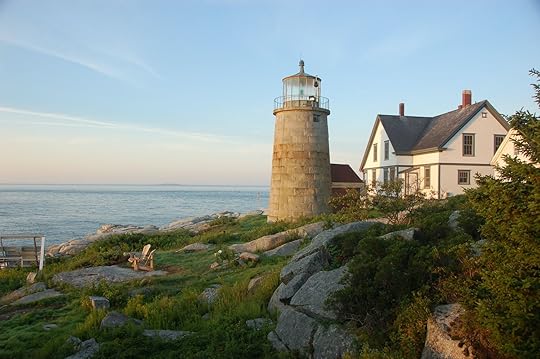
Photo: SmugMug
Whitehead Light Station is located on the remote island of Whitehead, and there are no ferries to get there. Instead, guests are picked up on the mainland by the Whitehead Light Station captain in one of the Whitehead Light Station boats and brought to the isolated 11.1-acre property. The Whitehead Light Station facility, fully restored in 2008, consists of seven bedrooms (each with its own private bathroom), two sitting rooms, a library, a dining room, and a full kitchen. The entire light station is available for rent by the week between June and October for $7,500 per week. There is a minimum rental period of three nights. The price may be high, but it includes a very special perk: The captain of the light station is there during guests’ stays and is available to take small groups on outings in the boat and on trips to the mainland.
Pemaquid Lighthouse, Bristol, ME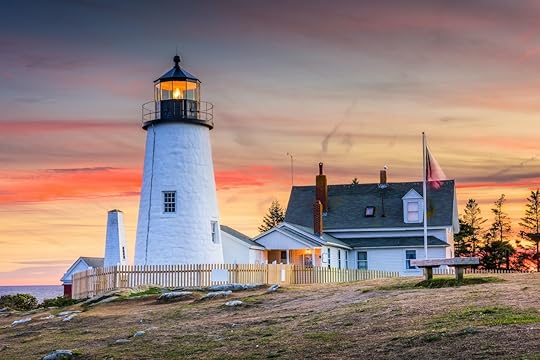
Photo: Sean Pavone/Shutterstock
The Pemaquid Lighthouse is located on the mainland in the small town of Bristol. While it does not have the same secludedness as the previous Maine lighthouse stations we listed, the keeper’s house at the Pemaquid Point Lighthouse is still a cozy and very scenic place to stay. Guests stay on the second floor of the keeper’s house in a small but comfortable apartment that has one bedroom, one bathroom, and a fully equipped kitchen with a dining area and a living room. It can sleep two to four people. Note that the first floor of the house is home to the Fisherman’s Museum, open daily from 9 AM to 5 PM. The Keeper’s House’s apartment is available year round, but those who book from November to June need to stay a minimum of three or four nights. The 1835 tower, which is still active, is open to the public every day from Memorial Day to Columbus Day from 1 PM to 5 PM, so if you want tranquility, book outside of those dates.
MassachusettsWings Neck Lighthouse, Pocasset, MA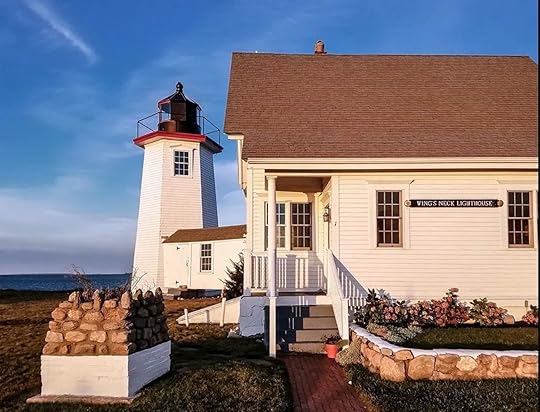
Photo: Wings Neck Lighthouse
Formerly an active US Coast Guard Lighthouse, the Wings Neck Lighthouse and its keeper’s cottage have been entirely renovated to accommodate up to eight guests in its three bedrooms. The keeper’s cottage is attached to the 1890 lighthouse via a breezeway, so guests can go to the top of the tower via the mahogany staircase to the lantern room whenever they want to. Inside the keeper’s cottage, the decor is all about New England, with shades of white and blue keeping a peaceful maritime atmosphere. If you want to swim, the property, which is private, is only 600 feet away from a lovely beach, but if you’re keen to swim from the rocks at the bottom of the lighthouse, you can safely do so. Wings Neck Lighthouse is the only lighthouse in New England to be available for rent on Airbnb.
West Dennis Light, West Dennis, MA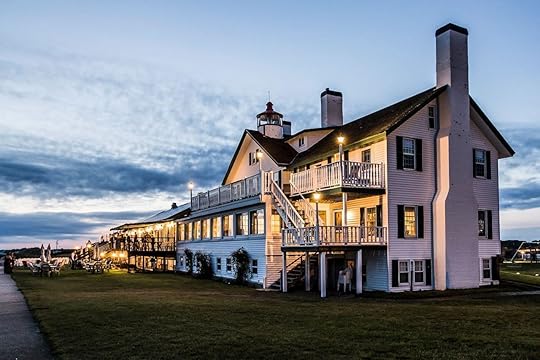
Photo: Lighthouse Inn/Facebook
Built in 1855 on the Cape Cod Peninsula, just a 90-minute drive from Boston, the West Dennis Light is now a large inn known as The Lighthouse Inn. The property sits on nine oceanfront acres and has a private beach and outdoor heated pool. The Lighthouse Inn is open from May to October and offers varied types of accommodations such as one-, two-, and three-bedroom cottages, family suites, and guest rooms. Guests can enjoy their meals at the Waterfront Restaurant while taking in the views of the Nantucket Sound.
Race Point Light Station, Provincetown, MA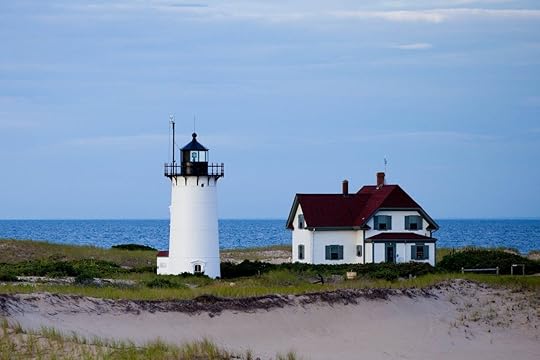
Photo: Race Point Lighthouse/Facebook
Located on the northern tip of Cape Cod in the Cape Cod National Seashore, the keeper’s house and the whistle house of Race Point Light Station have both been fully renovated and welcome guests from spring through fall. The keeper’s house, built in 1876, can accommodate up to 10 guests and can be entirely rented by one party. The Whistle House can welcome up to eight guests. The Race Point Light Station is in a secluded location, and guests need to use their own four-wheel-drive vehicle and obtain an oversand permit from the National Park Service to access it. Alternatively, they can contact a dune tour operator for transportation. Fit travelers can make their way on foot. The lighthouse, rebuilt in 1876, is open for tours twice a month from June to October.
Borden Flats Lighthome, Somerset, MA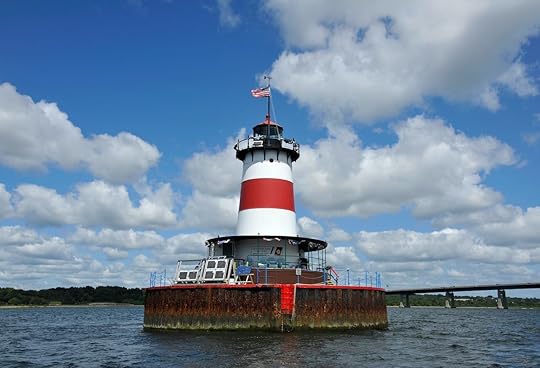
Photo: Allan Wood Photography/Shutterstock
This eye-catching off-shore lighthouse, located between Somerset and Fall River, is available for overnight stays via its Overnight Keepers Program from April to November, as well as a few nights in December upon request, starting at $395 per night. Built in 1881 and inhabited by keepers until 1963, the Borden Flats Lighthome is very cozy and welcoming, and it can accommodate two guests for up to two nights. The lighthouse is completely off the grid and powered by solar panels and batteries. There is no WiFi in the lighthouse, but guests are so busy enjoying the view from the lantern room that they are unlikely to miss it. Complimentary boat service from Borden Light Marina is offered to guests.
Bakers Island Lighthouse, Salem, MA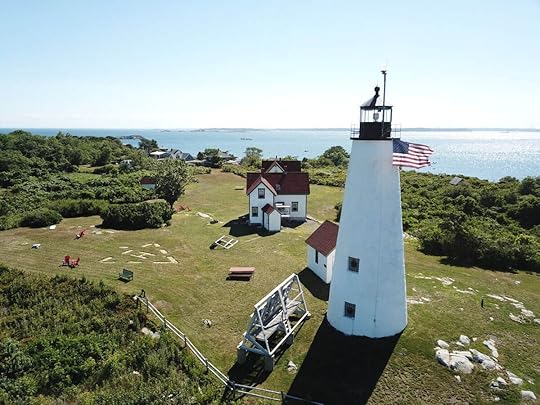
Photo: Bakers Island Light
Bakers Island Lighthouse is located on a 55-acre island that’s just four miles off the coast of Salem. The property itself is on 10 acres of private land and is available for rent for up to six people between June and September for a minimum of two nights (Fridays and Saturdays only). Rates start at $790 for four people for two nights (price includes a boat ride to and from the island). Guests don’t get to stay in the lighthouse but in the Assistant Keeper’s House, which is solar-powered with limited lighting, basic furniture, filtered well water, and a limited amount of hot water. There is no TV in the house, so guests can fully unplug and relax by the ocean.
Rhode Island Rose Island Lighthouse, Newport, RI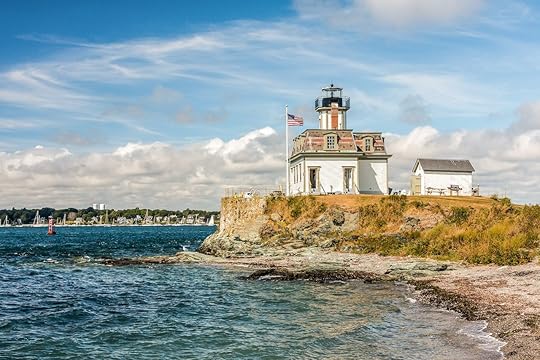
Photo: Wayne Penn/Shutterstock
Located on an 18-acre island that’s only accessible by ferry from Newport or Jamestown, the historic Rose Island Lighthouse is a great place to easily escape the city to find some quiet and solitude for one night or a full week. Guests have several accommodation options — they can stay in one of the two rooms in the lighthouse itself, in the keeper’s apartment, in the foghorn room, or in the barracks room. Whatever the selection, guests are sure to have a comfortable stay in the restored accommodations, as well as beautiful views of the natural surroundings. Guests will be able to make their way all the way up the still-functioning 1870 lighthouse and walk in the footsteps of the keepers. Those who stay there will not be completely secluded from the rest of the world as tours of the Rose Island Lighthouse and Fort Hamilton occur six days a week. The island is also open to the public for hiking and wildlife watching. 
The post 11 lighthouses in New England you can actually spend the night in appeared first on Matador Network.

TikTok user shows how to walk from the US to Russia in the dead of winter
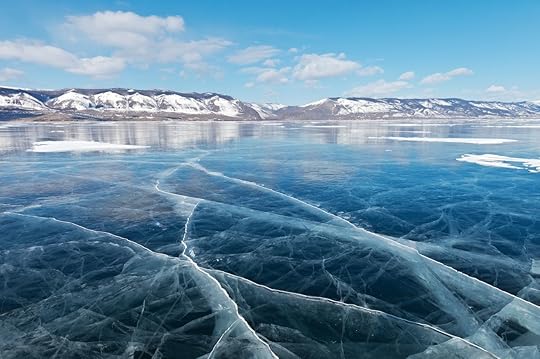
Walking from the United States to Russia might sound like an impossible feat, but not when you consider the presence of two unassuming islands in the Bering Strait. One of the two islands belongs to the US, and the other to Russia, but they are so close that it’s possible to walk between the two when the water that separates them freezes solid. Therefore, it seems possible to walk from the US to Russia in just 20 minutes.
TikTok user laubandrew is calling attention to this geographical quirk with a video they posted on the platform.
@laubandrewAnyone wanna walk to Russia with me?
They begin by pointing out the existence of Little Diomede Island, located 16 miles off the coast of Alaska and populated mostly by Indigenous people, and Big Diomede Island off the coast of Russia. “These islands are only two-and-a-half miles apart,” they said, “which means that in the winter when the water freezes, you can walk from the United States in only 20 minutes.”
But that’s not all.
“To make matters even crazier,” they said, “Big Diomede Island is 21 hours ahead of Little Diomede Island, which means that if you were to walk from the United States to Russia, you’d literally be walking into the next day. This is why they call Little Diomede ‘Yesterdayland’ and Big Diomede ‘Tomorrowland.’” 
The post TikTok user shows how to walk from the US to Russia in the dead of winter appeared first on Matador Network.

What is Texas ranch water?

What’s the signature flavor of Texas? Whether you live there or not, you likely have some thoughts on which food and which drink embodies the state’s legendary reputation. Most people will jump right to Texas barbecue for one, or Tex-Mex. On the drinks front, the frozen margarita seems like an obvious choice considering it was invented in Dallas, the home of the Margarita Mile.
Yet for some locals and a growing number of non-Texans, it’s a much simpler drink — in fact, about as simple as they come — that’s synonymous with a taste of the Lone Star state: ranch water.
Ranch water is made with tequila, lime juice, and Topo Chico sparkling water. Originally, fans of the cocktail built it right in the glass Topo Chico bottle by sipping some of the sparkling water to reduce the volume, pouring in the tequila, and then adding a squeeze and wedge of lime. Think of it like a tequila version of an easy drinking beverage like a Corona and lime, explains Connor Stehr, the cocktail expert behind Shake and Stehr.
“You drink it because it’s easy and cheap and refreshing,” Stehr, who lives in Denver but was raised in Houston, says. Ranch water and tacos are just as synonymous with Texas as margaritas and Tex-Mex. “It’s the perfect drink for when you go to the lake or go to someone’s property to go hunting.”
Gussied up versions are easy to find in Texas as well. On a popular TikTok account, one Texas man argues that the perfect ranch water is served in a glass with a salted rim (and this guy really knows his ranch water).
“Nothing says ‘Texas’ quite like ranch water,” says David Graham, the director of marketing at Karbach Brewing in Houston. “It’s a classic bar staple that Texans love because of its refreshing taste and simple, quality ingredients.”
The first time Graham tried ranch water was at his sister’s birthday in Austin on an unusually warm January day that “really called for something uber-refreshing,” he says. The flavors stuck with him. Karbach released a canned ranch water hard seltzer in January.
Karbach is one of a few breweries that’s making a seltzer designed to taste like the simple Texas classic. Shotgun Seltzer, Lone River Ranch, and Heineken’s Dos Equis have already launched, or are planning to launch, ranch water seltzers. It’s one sign of how the appeal of ranch water reaches beyond people who need a drink to cool down in the hot Texas sun. Another sign is ranch water’s increasing presence outside of the Lone Star state. Where I live in Denver, the Baja California-inspired restaurant Perdida features a ranch water cocktail on the menu that’s served in a glass with the extra Topo Chico and a small glass of fresh lime juice on the side so you can play with the proportions to your own liking.
Ranch water’s inevitable spread can be chalked up to the same reason any other regional drink gains notoriety outside of its home base: ranch water tastes good.
How ranch water became a Texas classic
Photo: Ranch 616/Facebook
When and where ranch water was invented is hard to pin down. The drinks publication PUNCH found one rumor that a rancher in Fort Davis created ranch water in the 1960s. Ranch water was also a popular word-of-mouth order at the White Buffalo Bar at the historic Gage Hotel in Marathon — it wasn’t until 2010 that the hotel officially added ranch water to the menu.
The same ambiguous origin story applies to how it got the name ranch water. There’s no documented reason, but the thinking goes that it earned the moniker because ranch water was easy to make in a bottle of Topo Chico as a quick happy hour drink after a day of working on the ranch.
It’s moved far beyond those humble roots. Ranch 616 in Austin has had ranch water on the menu since the early 2000s. It now sells ranch water made with reposado tequila, lime juice, orange cordial, and a bottle of Topo Chico on the side for $13. Other “waters” like one made with Tito’s vodka, lime, cranberry, and Topo Chico also appear on the menu. Eight Row Flint in Houston has a ranch water on the menu made with sotol (a Mexican spirit made from a shrub called the desert spoon instead of agave like tequila and mezcal), lime juice and sweet lime oleo saccharum, grapefruit oil, salt, and carbonated water.
Depending on where you are, you can find a ranch water that’s moved far beyond its namesake ingredients and simplicity. Some places swap cheap tequila for premium tequilas. Others take ranch water as an inspiration for other “waters” made with vodka, mezcal, whiskey, or rum. In short, this west Texas classic has taken on a life of its own as a refreshing anytime, anywhere drink.
Where to drink ranch water
Photo: Ranch 616/Facebook
One of the most accessible (and portable) ways to get the flavor of ranch water is in the form of a hard seltzer like Karbach or Lone River Ranch, though those are only distributed around Texas and a few surrounding states.
Ranch 616 is the classic ranch water destination in Austin, while Stehr suggests Eight Row Flint and El Tiempo in Houston. The Gage Hotel is a must-stop on any ranch water tour as well if you’re willing to travel the distance. Your best bet is to walk into a Texas bar, check that Topo Chico is available, and then ask for a ranch water.
How to make ranch water
Photo: calimedia/Shutterstock
Ranch water is about as hassle free to make yourself as you can find. Make it in an ice-cold Topo Chico bottle by sipping down (or pouring out) about a third of the sparkling water, adding a shot of tequila and the juice from about half a lime. Or make it in a glass with ice and continue to add Topo Chico from the bottle as you drink it down.
You can add jalapeño for spicy ranch water, put salt or tajin on the rim of the glass for a little extra kick, or sweeten it up with a bit of agave syrup. The one thing that pretty much everyone will tell you about ranch water is that the only irreplaceable ingredient is Topo Chico.
According to legend, natural spring waters from Cerro del Topo Chico in the state of Monterrey healed an Aztec princess in 1440. Those waters became regionally famous and the mountain became a destination. It was first bottled and sold in 1895 and gained a following in Texas and northern Mexico. In 2017, Coca-Cola purchased the brand and increased the distribution across the country.
So the next time you’re looking for a drink that’s easy to make, low in alcohol, and just about as refreshing as something can be on a hot day, grab a bottle of Topo and your favorite tequila and do as the Texans do. 
The post This classic west Texas drink is the refreshing sipper you’ve been missing appeared first on Matador Network.

Regent Seven Seas Cruises
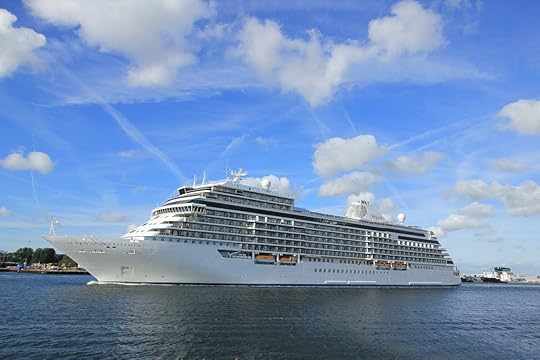
Spending time on a cruise ship is great, but the ship itself is only half the experience. For many, shore excursions are the real draw of a cruise vacation, though they tend to add to an already hefty cruise price tag. Regent Seven Seas Cruises is looking to ease this financial burden, and encourage passengers to return to the seas, by offering free multi-day packages for land excursions before and after the cruise.
Jason Montague, President and CEO of Regent Seven Seas Cruises, told Travel & Leisure, “One of the joys of travel is being completely immersed in a new culture, being able to learn about different histories, taste new flavors, and discover different ways of life. After being starved of these simple pleasures for so long, we wanted to offer our guests the opportunity to make up for lost time and maximize their next vacation with immersive exploration experiences at no extra cost to them.”
These two- and three-night shore excursion packages are available on cruises sailing between October 2021 and March 2022, on the Seven Seas Explorer and Seven Seas Voyager in Africa, Asia, Australia, New Zealand, and South America. Possible excursions include exploring Cape Town’s celebrated culinary scene and taking a cable car up Table Mountain, a three-day stay in Tokyo to visit its shrines and temples, or even an Aboriginal-led tour of Sydney’s Royal Botanic Garden.
For those who don’t wish to take advantage of the shore excursions, you can get a discount of up to $3,000 per hotel suite.
The cruise line is also offering a flexible cancelation policy in light of the COVID-19 pandemic, allowing guests who book by March 31 and sail before October 31, 2021, to cancel up to 15 days before the trip for a 100 percent cruise credit. 
The post This cruise line is offering free excursions in Asia, Africa, Australia, and more appeared first on Matador Network.

Brewery will send you to Ireland

Every now and again, a golden opportunity comes around that’s too good to pass on. Sometimes it’s hidden in a chocolate bar, and sometimes it comes in the form of a can of beer. In celebration of St. Patrick’s Day, the Irish-inspired, Colorado-crafted Breckenridge Brewery wants to send you and a friend to the Emerald Isle if you stumble upon a golden can of Nitro Irish Stout in any of its 12-packs.
If you’re lucky enough to find a gold can, all you need to do is take a photo of it and post it on social media. You can find more information on Breckenridge Brewery’s Facebook. Post your photo in the comments to make sure that it’s seen and be sure to use the hashtag #GoGoldSweepstakes.
The regulations are a little different for residents of Alabama and California. Instead of posting a picture of the can on social, the organizers want the lucky winner to snap a selfie of wearing gold for St. Patrick’s Day and post it on social media again with the #GoGoldSweepstakes hashtag.
Breckenridge Brewery is proud of its Nitro Irish Stout and hopes that the trip giveaway will bring more attention to the series and educate the “nitro-curious.” The brewery’s nitro series is based on a nitrogen-charged packaging that produces a velvety, cascading head inside the can. There are four varieties — Nitro Vanilla Porter, Nitro Orange Cream Ale, Nitro Pumpkin Spice Latte, and Nitro Chocolate Orange Stout — which are brewed from roasted Irish barley, providing a rich malty flavor.
The competition is open to all United States residents who are 21 or older. The deadline is March 31, 2021. You can see the full rules and conditions here. 
The post Win a free trip to Ireland if you find this golden ticket in a case of beer appeared first on Matador Network.

Airbnb added a new feature
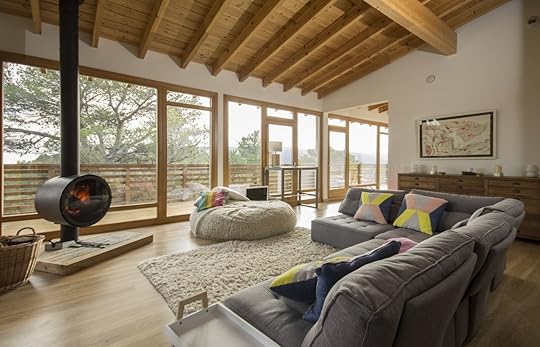
With 2020 having been the most chaotic and unpredictable year for travel in recent history, Airbnb is trying to ease the stress of trip-planning by offering a new “Flexible Dates” feature. Recognizing the increasingly popular “workation” trend — where people often travel during off-peak times and book longer stays — the accommodation platform is allowing people to search for homes without a specific check-in and check-out date.
“According to our new travel trends report, one-quarter of Americans would consider traveling during off-peak times of the year or the week. And in 2021 to date, more than one-third of people searching our platform have been flexible in terms of the date or location of their stay. At Airbnb, we believe these shifts will continue even after the pandemic fades, and that for those with new flexibility to choose their dates, travel will increasingly become a way of life,” Airbnb shared on its site.
The feature was released on February 23 and you can now search for a “weekend getaway,” a “week-long vacation,” or a “month-long” or “months-long” stay. The company hopes that the new flexibility will inspire people to plan their future getaways without worrying about cancellations, refunds, missed dates, and the usual hassle of accommodation booking.
“The traditional travel industry was built around fixed destinations with fixed dates in mind, but that model no longer meets the needs of today’s travelers,” Airbnb said. The platform is determined to keep up with the trends as they come and remain flexible in order to best serve its clients. 
The post Airbnb’s new ‘Flexible Dates’ feature just made trip planning easier appeared first on Matador Network.

The Outer Banks island guide
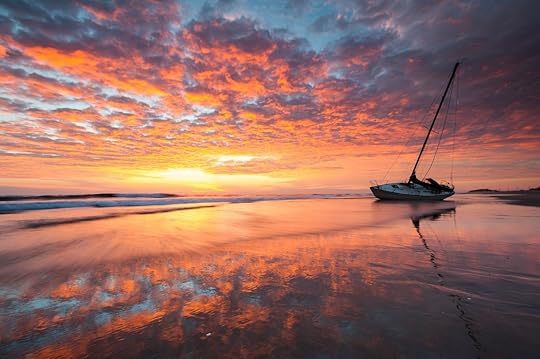
Seaside destinations tend to pack tons of tourists onto overcrowded beaches, but not in the Outer Banks of North Carolina. Here, more than 100 miles of open shoreline unfurl, encompassing seaside villages, laid-back towns, and wild refuges that seem farther away from it all than they actually are.
But beyond the remote feel, the geography and history of these barrier islands create some interesting opportunities, too: You’ll watch the sun rise and set over the water from the same place; explore long stretches of coast in their natural state; discover the stories of local pirates, Indigenous tribes, and early American settlers; find plenty of entertainment for the kids; and learn about the origins of human flight.
You could spend weeks enjoying the sun and sand, the wide variety of restaurants and historical attractions, the tiny seaside villages, but you probably don’t have weeks. The solution? Each section of the Outer Banks has a different style — some more low-key, some more kid-friendly — and a different feel. Find your vibe, and that’s your home base. Here’s where to look.
Northern Beaches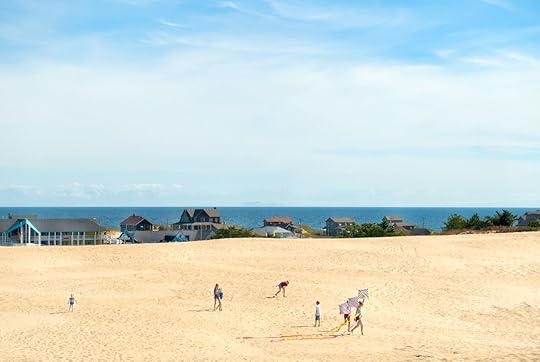
Photo: Outer Banks Visitors Bureau
Featured communities: Duck, Southern Shores, Kitty Hawk, Kill Devil Hills, and Nags Head
At the top end of the island chain, you’ll find a couple of small towns — namely Duck and Southern Shores — that could easily keep you entertained for your entire vacation. If you want lots to see and do in easy reach and don’t feeling like driving too much, set up camp here. From either town, you can charter a boat for an offshore adventure, take in 18 holes of golf, or check out markets selling everything from fine art to fresh fish.
Some 15 minutes to the south, Kitty Hawk and Kill Devil Hills are best known for their first-in-flight heritage. The Wright Brothers National Memorial features hands-on exhibits, a sculpture of the 1903 plane that you can climb into, and the line that marks the path of the famous first flight.
.map * { font-family: sans-serif !important;}.info-window-link { display: block; margin-top: 10px; padding: 3px 10px; border-radius: 3px; background-color: #0099ff; color: white !important; font-size: 12px; text-align: center;}.info-window-link:hover { text-decoration: none;}var _icons = { red: { url: 'https://travelstoke.s3.amazonaws.com/...', size: { width: 22.8, height: 35.4 }, anchor: { x: 11.4, y: 35.4 } }, orange: { url: 'https://travelstoke.s3.amazonaws.com/...', size: { width: 22.8, height: 35.4 }, anchor: { x: 11.4, y: 35.4 } }, yellow: { url: 'https://travelstoke.s3.amazonaws.com/...', size: { width: 22.8, height: 35.4 }, anchor: { x: 11.4, y: 35.4 } }};var _styles = { travelstoke: [ { featureType: 'administrative', elementType: 'geometry.stroke', stylers: [{ color: '#999999' }] }, { featureType: 'landscape.natural.terrain', elementType: 'geometry', stylers: [{ visibility: 'off' }] }, { featureType: 'poi.business', elementType: 'all', stylers: [{ visibility: 'off' }] }, { featureType: 'road', elementType: 'geometry.stroke', stylers: [{ color: '#ffffff' }] }, { featureType: 'water', elementType: 'geometry', stylers: [{ color: '#53acce' }] } ], desert: [{"elementType":"labels","stylers":[{"visibility":"off"},{"color":"#f49f53"}]},{"featureType":"landscape","stylers":[{"color":"#f9ddc5"},{"lightness":-7}]},{"featureType":"road","stylers":[{"color":"#813033"},{"lightness":43}]},{"featureType":"poi.business","stylers":[{"color":"#645c20"},{"lightness":38}]},{"featureType":"water","stylers":[{"color":"#1994bf"},{"saturation":-69},{"gamma":0.99},{"lightness":43}]},{"featureType":"road.local","elementType":"geometry.fill","stylers":[{"color":"#f19f53"},{"weight":1.3},{"visibility":"on"},{"lightness":16}]},{"featureType":"poi.business"},{"featureType":"poi.park","stylers":[{"color":"#645c20"},{"lightness":39}]},{"featureType":"poi.school","stylers":[{"color":"#a95521"},{"lightness":35}]},{},{"featureType":"poi.medical","elementType":"geometry.fill","stylers":[{"color":"#813033"},{"lightness":38},{"visibility":"off"}]},{},{},{},{},{},{},{},{},{},{},{},{"elementType":"labels"},{"featureType":"poi.sports_complex","stylers":[{"color":"#9e5916"},{"lightness":32}]},{},{"featureType":"poi.government","stylers":[{"color":"#9e5916"},{"lightness":46}]},{"featureType":"transit.station","stylers":[{"visibility":"off"}]},{"featureType":"transit.line","stylers":[{"color":"#813033"},{"lightness":22}]},{"featureType":"transit","stylers":[{"lightness":38}]},{"featureType":"road.local","elementType":"geometry.stroke","stylers":[{"color":"#f19f53"},{"lightness":-10}]},{},{},{}]};window.addEventListener('load', function() { jQuery(document).ready(function($) { var boundPadding; var id = 'map-603e1248868ca'; var atts = {"lat":"36.046278","lng":"-75.6425653","zoom":"10"}; var markers = [{"lat":"36.166431","lng":"-75.750973","title":"Duck"},{"lat":"36.124273","lng":"-75.730360","title":"Southern Shores"},{"lat":"36.079498","lng":"-75.715277","title":"Kitty Hawk"},{"lat":"36.015084","lng":"-75.668945","title":"Kill Devil Hills"},{"lat":"35.948817","lng":"-75.626784","title":"Nags Head"}]; var map = new google.maps.Map(document.getElementById(id), { mapTypeId: google.maps.MapTypeId.ROADMAP, disableDefaultUI: true, zoomControl: true, scrollwheel: false, zoomControlOptions: { style: google.maps.ZoomControlStyle.LARGE, position: google.maps.ControlPosition.LEFT_CENTER } }); if (atts.style && _styles[atts.style]) map.setOptions({ styles: _styles[atts.style] }); if (atts.padding !== undefined) boundPadding = parseInt(atts.padding); var mapBounds; if (atts.lat !== undefined && atts.lng !== undefined) { // Use lat and lng if provided map.setCenter({ lat: parseFloat(atts.lat), lng: parseFloat(atts.lng) }); } else if (markers && markers.length) { if (markers.length === 1) { // Use lat lng from first marker if only 1 provided map.setCenter({ lat: parseFloat(markers[0].lat), lng: parseFloat(markers[0].lng) }); } else { // With multiple markers create a boundry that includes all of them mapBounds = new google.maps.LatLngBounds(); } } var labels = 'ABCDEFGHIJKLMNOPQRSTUVWXYZ'; var labelIndex = 0; if(atts.offset !== undefined) { labelIndex = parseInt(atts.offset); } var infoWindow = new google.maps.InfoWindow({ content: '' }); var openInfoWindow = function(marker, target) { var info = $('<div>', { style: 'max-width:150px' }); $('<div>').append(marker.title).appendTo(info); if (marker.scroll_to) { $('<a>', { class: 'info-window-link', href: '#' marker.scroll_to, }).append('Jump To').appendTo(info); } infoWindow.setContent(info[0].outerHTML); infoWindow.open(map, target); }; $('#' id).on('click', '.info-window-link', function(e) { e.preventDefault(); var target = $(e.target).attr('href'); $('html, body').animate({ scrollTop: $(target).offset().top - 55 }, 1000); }); for (var i = 0; i < markers.length; i ) { var marker = markers[i]; if (marker.lat !== undefined && marker.lng !== undefined) { var markerObject = { map: map, position: { lat: parseFloat(marker.lat), lng: parseFloat(marker.lng) }, animation: google.maps.Animation.DROP, locationId: i, } if(atts.ordered !== undefined) { if(atts.numbered !== undefined) { number = labelIndex = labelIndex 1; markerObject.label = number.toString(); } else { markerObject.label = labels[labelIndex % labels.length]; } } if(marker.icon !== undefined) { markerObject.icon = marker.icon; } var mapMarker = new google.maps.Marker(markerObject); if (mapBounds) mapBounds.extend(mapMarker.getPosition()); if (marker.title) { var infowindow = new google.maps.InfoWindow({ content: marker.title }); if (markers.length === 1) { setTimeout(function() { openInfoWindow(marker, mapMarker); }, 1200); } google.maps.event.addListener(mapMarker, 'click', function() { openInfoWindow(markers[this.locationId], this); }); } } } if (mapBounds) { map.fitBounds(mapBounds, {top:boundPadding, right:boundPadding, left:boundPadding, bottom:boundPadding}); } else if (atts.zoom) { map.setZoom(parseInt(atts.zoom)); } else { map.setZoom(16); } });});Then there’s Nags Head and Jockey’s Ridge State Park, home of the tallest living sand dune on the East Coast — as well as some of the region’s best opportunities for hang-gliding, kite-flying, hiking, and paddle sports. When you’re here, don’t miss Jennette’s Pier, a North Carolina Aquarium facility that doubles as an invitation to cast a line into the waves.
You’ll find the Outer Banks’ widest variety of lodging options in this area, with choices ranging from rental houses to condos, hotels and motels, inns, B&Bs, and campgrounds. Food and drink options are top notch, as well — shout-out to the world’s best carbs at Duck Donuts and the award-winning sours at Outer Banks Brewing Station. If you’re a family with curious kids or a crew looking to get out and explore, the Northern Beaches will make a great home base for your OBX vacation.
Tip: If you’re sold on the Northern Beaches but haven’t figured out when to come, consider the weekend of April 16–18 to hit up Taste of the Beach. An annual sampling party of food and drink from tons of local restaurants, it’s a one-stop-shop to discover your new favorite dishes and dining destinations. Event organizers are revamping plans for 2021 to factor in pandemic precautions, but in years past, the event has included wine tastings, organic farm-to-fork meals, cooking classes, brewery tours, tapas crawls, and lots more.
Roanoke Island & Dare Mainland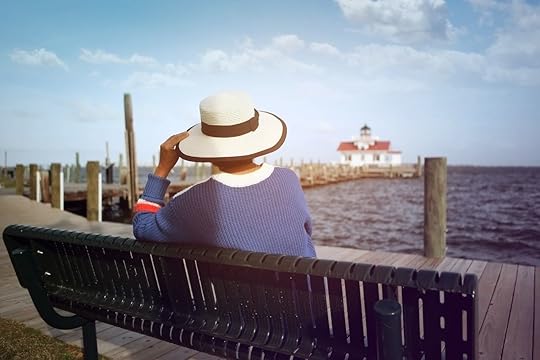
Photo: BB Design Stock/Shutterstock
Featured communities: Manteo and Wanchese
History buffs love Roanoke Island. Here’s a rundown of its story:
The Roanoke Algonquian people and their predecessors first came here around 9500 to 8000 BCE, creating communities thousands of years before the English arrived on Roanoke Island. Today, you can get a feel for what these early times were like at a number of living history sites, parks, and museums.
Fast-forward to the Renaissance, and English settlers established the second Roanoke Colony on Roanoke Island in 1587 — by 1590, the settlers had vanished. More than 400 years later, we still don’t know what happened. You can catch an annual outdoor drama that tells the story of the Lost Colony at what is now Fort Raleigh National Historic Site, immersing you in the mystery right where the real history happened. Just down the road, Festival Park shows what life was like for both white settlers and Indigenous inhabitants during the late 1500s. You and the fam can climb aboard the Elizabeth II replica ship, plant crops using Algonquian farming techniques, and play the same games colonist kids would have played.
In the early 1860s, a group of formerly enslaved Black Americans founded the Freedmen’s Colony of Roanoke Island, and the Black-majority community they created served as a safe haven during the Civil War. Not only that, but their contributions to the war effort ultimately helped the Union emerge victorious. The Outer Banks History Center in Manteo has exhibits on this colony and other communities throughout the islands, and it’s a great place to spend a rainy day.
.map * { font-family: sans-serif !important;}.info-window-link { display: block; margin-top: 10px; padding: 3px 10px; border-radius: 3px; background-color: #0099ff; color: white !important; font-size: 12px; text-align: center;}.info-window-link:hover { text-decoration: none;}var _icons = { red: { url: 'https://travelstoke.s3.amazonaws.com/...', size: { width: 22.8, height: 35.4 }, anchor: { x: 11.4, y: 35.4 } }, orange: { url: 'https://travelstoke.s3.amazonaws.com/...', size: { width: 22.8, height: 35.4 }, anchor: { x: 11.4, y: 35.4 } }, yellow: { url: 'https://travelstoke.s3.amazonaws.com/...', size: { width: 22.8, height: 35.4 }, anchor: { x: 11.4, y: 35.4 } }};var _styles = { travelstoke: [ { featureType: 'administrative', elementType: 'geometry.stroke', stylers: [{ color: '#999999' }] }, { featureType: 'landscape.natural.terrain', elementType: 'geometry', stylers: [{ visibility: 'off' }] }, { featureType: 'poi.business', elementType: 'all', stylers: [{ visibility: 'off' }] }, { featureType: 'road', elementType: 'geometry.stroke', stylers: [{ color: '#ffffff' }] }, { featureType: 'water', elementType: 'geometry', stylers: [{ color: '#53acce' }] } ], desert: [{"elementType":"labels","stylers":[{"visibility":"off"},{"color":"#f49f53"}]},{"featureType":"landscape","stylers":[{"color":"#f9ddc5"},{"lightness":-7}]},{"featureType":"road","stylers":[{"color":"#813033"},{"lightness":43}]},{"featureType":"poi.business","stylers":[{"color":"#645c20"},{"lightness":38}]},{"featureType":"water","stylers":[{"color":"#1994bf"},{"saturation":-69},{"gamma":0.99},{"lightness":43}]},{"featureType":"road.local","elementType":"geometry.fill","stylers":[{"color":"#f19f53"},{"weight":1.3},{"visibility":"on"},{"lightness":16}]},{"featureType":"poi.business"},{"featureType":"poi.park","stylers":[{"color":"#645c20"},{"lightness":39}]},{"featureType":"poi.school","stylers":[{"color":"#a95521"},{"lightness":35}]},{},{"featureType":"poi.medical","elementType":"geometry.fill","stylers":[{"color":"#813033"},{"lightness":38},{"visibility":"off"}]},{},{},{},{},{},{},{},{},{},{},{},{"elementType":"labels"},{"featureType":"poi.sports_complex","stylers":[{"color":"#9e5916"},{"lightness":32}]},{},{"featureType":"poi.government","stylers":[{"color":"#9e5916"},{"lightness":46}]},{"featureType":"transit.station","stylers":[{"visibility":"off"}]},{"featureType":"transit.line","stylers":[{"color":"#813033"},{"lightness":22}]},{"featureType":"transit","stylers":[{"lightness":38}]},{"featureType":"road.local","elementType":"geometry.stroke","stylers":[{"color":"#f19f53"},{"lightness":-10}]},{},{},{}]};window.addEventListener('load', function() { jQuery(document).ready(function($) { var boundPadding; var id = 'map-603e124886905'; var atts = {"lat":"35.836278","lng":"-75.6425653","zoom":"11"}; var markers = [{"lat":"35.906342","lng":"-75.670770","title":"Manteo"},{"lat":"35.840320","lng":"-75.625187","title":"Wanchese"}]; var map = new google.maps.Map(document.getElementById(id), { mapTypeId: google.maps.MapTypeId.ROADMAP, disableDefaultUI: true, zoomControl: true, scrollwheel: false, zoomControlOptions: { style: google.maps.ZoomControlStyle.LARGE, position: google.maps.ControlPosition.LEFT_CENTER } }); if (atts.style && _styles[atts.style]) map.setOptions({ styles: _styles[atts.style] }); if (atts.padding !== undefined) boundPadding = parseInt(atts.padding); var mapBounds; if (atts.lat !== undefined && atts.lng !== undefined) { // Use lat and lng if provided map.setCenter({ lat: parseFloat(atts.lat), lng: parseFloat(atts.lng) }); } else if (markers && markers.length) { if (markers.length === 1) { // Use lat lng from first marker if only 1 provided map.setCenter({ lat: parseFloat(markers[0].lat), lng: parseFloat(markers[0].lng) }); } else { // With multiple markers create a boundry that includes all of them mapBounds = new google.maps.LatLngBounds(); } } var labels = 'ABCDEFGHIJKLMNOPQRSTUVWXYZ'; var labelIndex = 0; if(atts.offset !== undefined) { labelIndex = parseInt(atts.offset); } var infoWindow = new google.maps.InfoWindow({ content: '' }); var openInfoWindow = function(marker, target) { var info = $('<div>', { style: 'max-width:150px' }); $('<div>').append(marker.title).appendTo(info); if (marker.scroll_to) { $('<a>', { class: 'info-window-link', href: '#' marker.scroll_to, }).append('Jump To').appendTo(info); } infoWindow.setContent(info[0].outerHTML); infoWindow.open(map, target); }; $('#' id).on('click', '.info-window-link', function(e) { e.preventDefault(); var target = $(e.target).attr('href'); $('html, body').animate({ scrollTop: $(target).offset().top - 55 }, 1000); }); for (var i = 0; i < markers.length; i ) { var marker = markers[i]; if (marker.lat !== undefined && marker.lng !== undefined) { var markerObject = { map: map, position: { lat: parseFloat(marker.lat), lng: parseFloat(marker.lng) }, animation: google.maps.Animation.DROP, locationId: i, } if(atts.ordered !== undefined) { if(atts.numbered !== undefined) { number = labelIndex = labelIndex 1; markerObject.label = number.toString(); } else { markerObject.label = labels[labelIndex % labels.length]; } } if(marker.icon !== undefined) { markerObject.icon = marker.icon; } var mapMarker = new google.maps.Marker(markerObject); if (mapBounds) mapBounds.extend(mapMarker.getPosition()); if (marker.title) { var infowindow = new google.maps.InfoWindow({ content: marker.title }); if (markers.length === 1) { setTimeout(function() { openInfoWindow(marker, mapMarker); }, 1200); } google.maps.event.addListener(mapMarker, 'click', function() { openInfoWindow(markers[this.locationId], this); }); } } } if (mapBounds) { map.fitBounds(mapBounds, {top:boundPadding, right:boundPadding, left:boundPadding, bottom:boundPadding}); } else if (atts.zoom) { map.setZoom(parseInt(atts.zoom)); } else { map.setZoom(16); } });});Beyond tangible history, Manteo is also home to some of the region’s best seafood restaurants. The powerful Gulf Stream and Labrador Current collide off the coast of North Carolina, stirring up lots of fish, crabs, oysters, and more, all ready to grace your plate right off the boat. Some eateries even offer “hook and cook” service, where you can bring in fish you catch yourself and they’ll prepare it to your liking.
While you’re in Manteo counting crab legs and oysters, don’t miss the world-class North Carolina Aquarium. Where else can you explore a sunken treasure ship, touch a stingray, and have a slumber party in front of a shark tank? Over on the Dare Mainland, meanwhile, leave time to get close to nature beyond the glass: Alligator River National Wildlife Refuge — which has incredible trails over 150,000 acres — protects habitat for everything from waterfowl to alligators to black bears, so you never know what you might see!
As for accommodations, they tend toward inns and B&Bs in these parts, and most orient themselves more to adults and families with older teens vs. young kids. However, you’ll obviously find plenty to keep your all-ages pod entertained during the day.
Hatteras Island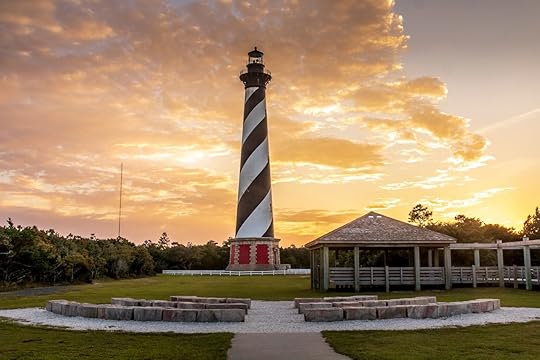
Photo: Jason Schronce/Shutterstock
Featured communities: Rodanthe, Waves, Salvo, Avon, Buxton, Frisco, and Hatteras
The lower stretch of Dare County’s Outer Banks offers the most solitude on the islands. This is the home of Cape Hatteras Lighthouse, the majority of the wonderfully undeveloped Cape Hatteras National Seashore, and lots of outlets for kiteboarding, windsurfing, horseback riding, fishing, and other recreation amidst the waves. And if you’re just after a quiet refuge away from it all where you can sit and reflect while watching the sea, you’ll find your happy place on Hatteras Island.
Normally, a climb up Cape Hatteras Lighthouse would give you the Outer Banks’ best bird’s-eye view of the sound, sea, and island chain. Visitors can usually get tickets from late April through Columbus Day, but COVID-19 precautions are currently in place and the lighthouse’s stairs are temporarily closed. Still, you can stop by for photo ops and a visit to the adjacent Hatteras Island Visitor Center and Museum of the Sea for tips on local recreation and insight on the history of the lighthouse — including its half-mile move inland in 1999.
.map * { font-family: sans-serif !important;}.info-window-link { display: block; margin-top: 10px; padding: 3px 10px; border-radius: 3px; background-color: #0099ff; color: white !important; font-size: 12px; text-align: center;}.info-window-link:hover { text-decoration: none;}var _icons = { red: { url: 'https://travelstoke.s3.amazonaws.com/...', size: { width: 22.8, height: 35.4 }, anchor: { x: 11.4, y: 35.4 } }, orange: { url: 'https://travelstoke.s3.amazonaws.com/...', size: { width: 22.8, height: 35.4 }, anchor: { x: 11.4, y: 35.4 } }, yellow: { url: 'https://travelstoke.s3.amazonaws.com/...', size: { width: 22.8, height: 35.4 }, anchor: { x: 11.4, y: 35.4 } }};var _styles = { travelstoke: [ { featureType: 'administrative', elementType: 'geometry.stroke', stylers: [{ color: '#999999' }] }, { featureType: 'landscape.natural.terrain', elementType: 'geometry', stylers: [{ visibility: 'off' }] }, { featureType: 'poi.business', elementType: 'all', stylers: [{ visibility: 'off' }] }, { featureType: 'road', elementType: 'geometry.stroke', stylers: [{ color: '#ffffff' }] }, { featureType: 'water', elementType: 'geometry', stylers: [{ color: '#53acce' }] } ], desert: [{"elementType":"labels","stylers":[{"visibility":"off"},{"color":"#f49f53"}]},{"featureType":"landscape","stylers":[{"color":"#f9ddc5"},{"lightness":-7}]},{"featureType":"road","stylers":[{"color":"#813033"},{"lightness":43}]},{"featureType":"poi.business","stylers":[{"color":"#645c20"},{"lightness":38}]},{"featureType":"water","stylers":[{"color":"#1994bf"},{"saturation":-69},{"gamma":0.99},{"lightness":43}]},{"featureType":"road.local","elementType":"geometry.fill","stylers":[{"color":"#f19f53"},{"weight":1.3},{"visibility":"on"},{"lightness":16}]},{"featureType":"poi.business"},{"featureType":"poi.park","stylers":[{"color":"#645c20"},{"lightness":39}]},{"featureType":"poi.school","stylers":[{"color":"#a95521"},{"lightness":35}]},{},{"featureType":"poi.medical","elementType":"geometry.fill","stylers":[{"color":"#813033"},{"lightness":38},{"visibility":"off"}]},{},{},{},{},{},{},{},{},{},{},{},{"elementType":"labels"},{"featureType":"poi.sports_complex","stylers":[{"color":"#9e5916"},{"lightness":32}]},{},{"featureType":"poi.government","stylers":[{"color":"#9e5916"},{"lightness":46}]},{"featureType":"transit.station","stylers":[{"visibility":"off"}]},{"featureType":"transit.line","stylers":[{"color":"#813033"},{"lightness":22}]},{"featureType":"transit","stylers":[{"lightness":38}]},{"featureType":"road.local","elementType":"geometry.stroke","stylers":[{"color":"#f19f53"},{"lightness":-10}]},{},{},{}]};window.addEventListener('load', function() { jQuery(document).ready(function($) { var boundPadding; var id = 'map-603e124886926'; var atts = {"lat":"35.446278","lng":"-75.5425653","zoom":"10"}; var markers = [{"lat":"35.599309","lng":"-75.466589","title":"Rodanthe"},{"lat":"35.564856","lng":"-75.465229","title":"Waves"},{"lat":"35.539271","lng":"-75.472892","title":"Salvo"},{"lat":"35.351748","lng":"-75.508731","title":"Avon"},{"lat":"35.267786","lng":"-75.538383","title":"Buxton"},{"lat":"35.231672","lng":"-75.628153","title":"Frisco"},{"lat":"35.210415","lng":"-75.698352","title":"Hatteras"}]; var map = new google.maps.Map(document.getElementById(id), { mapTypeId: google.maps.MapTypeId.ROADMAP, disableDefaultUI: true, zoomControl: true, scrollwheel: false, zoomControlOptions: { style: google.maps.ZoomControlStyle.LARGE, position: google.maps.ControlPosition.LEFT_CENTER } }); if (atts.style && _styles[atts.style]) map.setOptions({ styles: _styles[atts.style] }); if (atts.padding !== undefined) boundPadding = parseInt(atts.padding); var mapBounds; if (atts.lat !== undefined && atts.lng !== undefined) { // Use lat and lng if provided map.setCenter({ lat: parseFloat(atts.lat), lng: parseFloat(atts.lng) }); } else if (markers && markers.length) { if (markers.length === 1) { // Use lat lng from first marker if only 1 provided map.setCenter({ lat: parseFloat(markers[0].lat), lng: parseFloat(markers[0].lng) }); } else { // With multiple markers create a boundry that includes all of them mapBounds = new google.maps.LatLngBounds(); } } var labels = 'ABCDEFGHIJKLMNOPQRSTUVWXYZ'; var labelIndex = 0; if(atts.offset !== undefined) { labelIndex = parseInt(atts.offset); } var infoWindow = new google.maps.InfoWindow({ content: '' }); var openInfoWindow = function(marker, target) { var info = $('<div>', { style: 'max-width:150px' }); $('<div>').append(marker.title).appendTo(info); if (marker.scroll_to) { $('<a>', { class: 'info-window-link', href: '#' marker.scroll_to, }).append('Jump To').appendTo(info); } infoWindow.setContent(info[0].outerHTML); infoWindow.open(map, target); }; $('#' id).on('click', '.info-window-link', function(e) { e.preventDefault(); var target = $(e.target).attr('href'); $('html, body').animate({ scrollTop: $(target).offset().top - 55 }, 1000); }); for (var i = 0; i < markers.length; i ) { var marker = markers[i]; if (marker.lat !== undefined && marker.lng !== undefined) { var markerObject = { map: map, position: { lat: parseFloat(marker.lat), lng: parseFloat(marker.lng) }, animation: google.maps.Animation.DROP, locationId: i, } if(atts.ordered !== undefined) { if(atts.numbered !== undefined) { number = labelIndex = labelIndex 1; markerObject.label = number.toString(); } else { markerObject.label = labels[labelIndex % labels.length]; } } if(marker.icon !== undefined) { markerObject.icon = marker.icon; } var mapMarker = new google.maps.Marker(markerObject); if (mapBounds) mapBounds.extend(mapMarker.getPosition()); if (marker.title) { var infowindow = new google.maps.InfoWindow({ content: marker.title }); if (markers.length === 1) { setTimeout(function() { openInfoWindow(marker, mapMarker); }, 1200); } google.maps.event.addListener(mapMarker, 'click', function() { openInfoWindow(markers[this.locationId], this); }); } } } if (mapBounds) { map.fitBounds(mapBounds, {top:boundPadding, right:boundPadding, left:boundPadding, bottom:boundPadding}); } else if (atts.zoom) { map.setZoom(parseInt(atts.zoom)); } else { map.setZoom(16); } });});If you’ve seen or read Nights in Rodanthe, you have an idea of the quiet inns, B&Bs, and vacation rental homes that dot Hatteras Island. You can stay at the actual Inn at Rodanthe as seen in the film, which has been moved inland — just like the lighthouse — to protect it from the ever-changing line between shore and sea. Other lodging options here include small motels, condos and townhouses that don’t overpower the landscape, cute cottages, and fully equipped campgrounds and RV parks for those who bring their accommodations with them to the beach.
You can drive the entire length of the island — and all along the national seashore — via the Outer Banks National Scenic Byway, a 138-mile route that winds down to Whalebone Junction, just south of Nags Head. It’s one of the most beautiful drives in the state, connecting ocean views to natural spots like Pea Island National Wildlife Refuge, where bird species outnumber days in the year (and observation platforms are right off the parking areas). If wildlife were factored into the solitude equation, Hatteras would be one of the buzziest spots around. 
The post Islands of The Outer Banks: Which one is right for you? appeared first on Matador Network.

February 26, 2021
Best travel books written by women

Until just a few decades ago, simply stepping outside of the male-dominated household was an act of rebellion. Yet women still chased freedom in faraway places, writing about their experiences in order to challenge restrictive cultural norms. These weren’t just wealthy European spinsters but mothers, scientists, and alpinists from diverse global cultures. Biruté Galdikas studied orangutans in the jungles of Borneo, bringing conservation and eco-advocacy to the public with her memoir Reflections of Eden. In Isabelle Eberhardt’s diary, The Nomad, she describes dressing like a man to find acceptance with indigenous North African tribes. And Zora Neale Hurston initiated herself into the voodoo practices of Caribbean islands though her anthropological travelogue, Tell My Horse, didn’t gain attention until after her death.
In pushing the limitations of their own locations, ladies also campaigned against the status quo. So no matter how challenging your own travel restrictions might feel right now, these books will remind you that women have a history of traveling beyond stereotypical boundaries — both through their movements and their words.
1. All God’s Children Need Traveling Shoes by Maya Angelou
Photo: Penguin Random House
Angelou only intended to help settle her son into university in Accra, Ghana. But after he survives a harrowing car accident (not a spoiler!) during his first days in the capital city, the worried mother decides to stay put for his full recovery. What follows is Angelou’s own version of settling in, exploring West African culture, and connecting her family’s history of enforced slavery in the American South to their roots in the Mother Continent.
While many readers meet Angelou through her first autobiographical work, I Know Why The Caged Bird Sings, this is the fifth title in her self-reflective series. The American poet and Civil Rights activist was one of the first Black female writers to discuss her personal life through literature, portraying both the positive and negative spectrum of human experiences.
Much of her time in Traveling Shoes is spent seeking belonging in a place where skin color doesn’t draw attention, yet Angelou’s Americanness still sets her apart in ways she struggles to accept. Written in 1963, the book proves Angelou’s idea that “home is the place where one is created” — an absorbing sentiment regardless of your heritage.
2. The Nomad: The Diaries of Isabelle Eberhardt by Isabelle Eberhardt
Photo: Interlink Books
Eberhardt could be called an escapist, in every sense of the word. Born illegitimately into a Swiss-Russian family, the 20-year-old fled Europe’s middle-class society in 1897 in search of nomadic culture in Northern Africa. Disgusted by the attitudes of French colonial settlers in Morocco and Algeria, she sought out indigenous tribes, and when femininity threatened to limit her explorations, the young adult dressed in male clothing and traveled under the name Si Mahmoud.
Her diaries are an intense emotional journey, full of acute observations on the landscape and a developing sense of self. You may or may not be shocked by her experiments in drugs, sex, Sufi spiritualism, and whatever else disconnected her from the physical world.
While Eberhardt never openly voiced a specific gender identity, she’s championed as an early pioneer in gender fluidity and one of the first LGBTQ+ travelers. Also not addressed in this book: her shocking death at age 28 in a flash flood that some believe was not an accident.
3. Tell My Horse by Zora Neale Hurston
Photo: Harper Collins
In an era when women were expected to be teachers or nurses, Hurston traveled to Haiti and Jamaica on a prestigious Guggenheim Fellowship to study Afro-Caribbean religion. Using folklore as a lens to better understand culture, the American writer and anthropologist initiated herself into the voodoo practices of these islands.
Tell My Horse has been described as dark and strange, and it received mixed responses when it was published in 1938. Hurston doesn’t waste too many words explaining local vocabulary or backstories, which forces you to jump straight into her sensory environment. This makes for an unsettling and slightly confusing read; the book feels like a vintage folktale — all the more spooky because it’s real.
Keep in mind that Hurston — who also wrote the modern classic Their Eyes Were Watching God — never found financial success for her writings on Black culture. At her death in 1960, she did not have enough money saved for a headstone, and her grave went unmarked for 13 years.
4. Stories of the Sahara by Sanmao (translation by Mike Fu)
Photo: Bloomsbury
As a kid, Echo Chen Ping revealed in National Geographic’s multicultural images and stories. Though conservative Chinese culture did not endorse independent female travel — and the post-Mao region felt isolated from foreign influence — Echo used education as her ticket out.
After studying in Europe, she decided to become the first female explorer to cross the Spanish territory of El Aaiún, which is now part of Western Sahara. Echo took up the pen name Sanmao and wrote with a youthful curiosity of the indigenous Sahrawi, desert domesticity with her Spanish husband, and the traveler’s eternally frustrating wish to be somewhere else.
Stories was released in mainland China, Hong Kong, and Taiwan in 1974, instantly inspiring a generation of Asian women to reconsider their world views. Yet the travel memoir did not receive an English translation until 2020 — just in time to motivate a new generation of women, trapped at home by a global pandemic.
5. Triunfar al Extremo by Elsa Ávila
Photo: Elsa Avila
English speakers are still waiting on a translation of this travel memoir from Mexican climber Elsa Ávila. Or, as she’s also known, the “first Latin American female to summit Everest.”
What’s more incredible than this world ranking is the story behind the historic 1999 summit effort. Ávila began rock climbing at age 15, scaling multiple famous rock faces and then climbing into the elite “eight-thousander” list of mountains over 8,000 meters. While climbing Everest’s southeast route in 1989, she showed signs of potential respiratory failure, and the expedition turned around, just 302 feet from the top.
Her refusal to give up on this goal finds a powerful voice in Triunfar. Ávila returned 10 years later, this time finishing the climb and gaining international renown for her courage and commitment. You’ll need to read the book to learn more; Ávila gained international status, but only the male members of her earlier expedition have Wikipedia pages.
6. Around The World in Seventy-Two Days by Nellie Bly
Photo: Penguin Random House
Bly was no stranger to immersive writing. In her early 20s, she traveled through Mexico as a foreign news correspondent nearly deported for her critical coverage of the government. Back in the States, the journalist went undercover in a mental asylum to document the horrible conditions of patients.
Then in 1888, Bly took on an assignment for the New York World newspaper that would prove her mettle in the male-dominated industry: Mimicking Jules Verne’s adventure in the book Around The World in 80 Days, she would circumnavigate the globe in fewer than 75 days. Allowed to carry only a small bag, Bly journeyed some 24,890 miles and arrived in New York City in just 72 days — a world record at that time.
While Bly’s reports from the trip may seem a bit sensationalized to modern readers, they fit the expressive reporting style of her era. She is not afraid to question colonial authority in the countries she passes through, and it’s clear that Bly believes in speaking out for the downtrodden. Her refusal to write about typical female topics made her one of the most memorable journalists of that era.
7. Reflections of Eden: My Years With The Orangutans of Borneo by Birtué Galdikas
Photo: Hachette Book Group
Borneo’s rainforests — the only natural habitat of the orangutan — have changed dramatically since Goldikas first arrived in 1971 to study and rescue captured primates. Establishing a base in Indonesia’s Tanjung Puting National Park, Goldikas sets out to study and save orangutans from capture for zoos and private homes.
Her book begins with those first days in the field when she was just a protégé of Louis Leaky (along with famed primatologists Jane Goodall and Diane Fossey) and not yet the world’s recognized authority on orangutans.
Reflections is scientific yet personal, portraying an intense motherly devotion to the creatures she shares an environment with. When writing of her own human relationships, Goldikas demonstrates why she chose her orange-haired neighbors over more traditional family obligations.
It’s a radical example of dedication and brought a powerful voice to conservation advocacy. 
The post 7 must-read travel books by women who challenged cultural norms appeared first on Matador Network.

Underwater eco-museum in Cannes
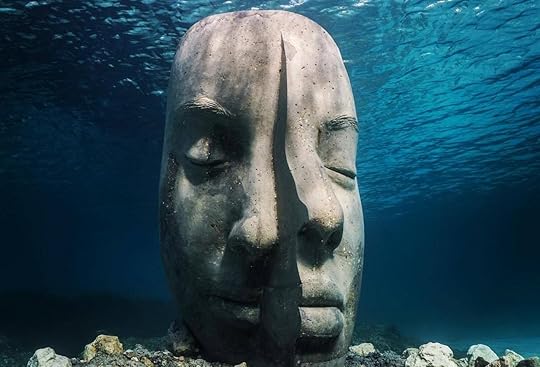
The French Riviera — and Cannes in particular — is known as a luxury vacation spot and the home of the namesake movie festival that takes place every summer. Now, Cannes is adding another attraction to its repertoire: an underwater eco-museum. Featuring six sculptures by renowned British artist Jason deCaires Taylor, the museum lies just off the coast of the nearby island of Sainte-Marguerite.
The goal of the project is to draw attention to the declining state of the world’s oceans and the depleted Mediterranean Sea. Once a fishing powerhouse, today the Med is more polluted than ever and is suffering from overfishing and tourism. “I think that there’s a danger when we look at the ocean, it looks robust and powerful, untouchable. When what’s happening beneath the water is unprecedented, it’s extremely fragile,” deCaires Taylor told Architectural Digest.
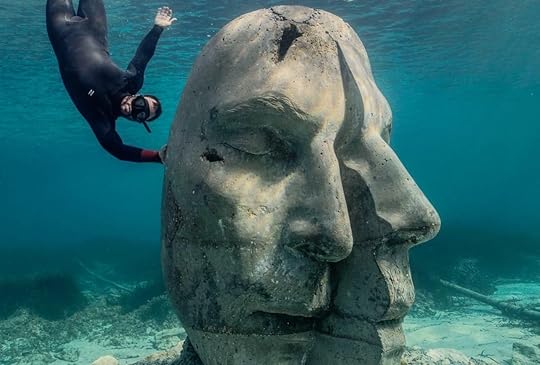
Photo: Jason deCaires Taylor/Facebook
The sculptures are made of pH-neutral cement and depict portraits of the locals, from children to the elderly. Each one is six feet tall and weighs 10 tons. The museum was funded by the mayor’s office and took a total of four years to complete. The best way to see the sculptures is to dive in and snorkel your way through the exhibition. The underwater museum can be visited for free, without an entrance fee.
While working on the concept, deCaires Taylor got his inspiration from the local community, firstly casting the faces of 40 volunteers and narrowing it down to six that he molded into large-scale sculptures. The statues feature portraits of an 80-year-old fisherman, an entrepreneur, a curator, and schoolchildren.
Jason deCaires Taylor is known for his underwater art, having created over 1,000 sculptures to date in various places around the globe such as Lanzarote, Grenada, Australia, and Mexico. 
The post Spectacular underwater museum opens in Cannes, France appeared first on Matador Network.

Matador Network's Blog
- Matador Network's profile
- 6 followers



